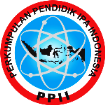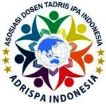Strategi Writing to Learn pada Pembelajaran IPA SMP untuk Meningkatkan Penguasaan Konsep dan Keterampilan Komunikasi Siswa pada Materi Tata Surya
Abstract
The study of science is one of the important learning that activates and improves student competence, such as higher-order thinking and communication competency. The development of the ability to work scientifically and pursue the student to communicate investigation result are the main goal of science learning. Based on the previous study, the understanding of concept and student communication skills remains low at science learning. The learning strategy “writing to learn” is predicted to raise the low understanding concept ability and communication skill, especially in solar system learning material. The study aims to know the enhancement and get the prediction between the understanding of concept and communication skills after applying the strategy writing to learn in solar system material. The research used a quasi-experiment method with pre-experimental with one group pretest-posttest design. The study conducted in one of the junior high schools in Bandung, West Java. The instrument used is to measure the understanding of the concept by using multiple-choice questions, on the other hand, to measure the communication skill, the author use journal writing assignment. The analysis result showed that the implementation of writing to learn strategy improve the understanding of concept and communication skill even though it classified as a medium category. The enhancement happened toward the average communication skill in each meeting. Nonetheless, the low relation and influence are shown after correlation analysis happened between the understanding of concept and communication skills
Keywords : Writing to Learn, Mastery of Concept, Communication Skills, Solar System Learning Material
Tujuan dari penelitian ini adalah untuk mengetahui peningkatan serta mendapatkan gambaran hubungan antara kemampuan penguasaan konsep dan keterampilan komunikasi setelah diterapkannya strategi pembelajaran writing to learn, khususnya pada materi tata surya. Penelitian ini menggunakan metode quasi experiment dengan pre-experimental with one group pretest-posttest design dan dilaksanakan pada salah satu SMP di Kota Bandung, Jawa Barat. Instrumen yang digunakan untuk mengukur penguasaan konsep menggunakan soal tes pilihan ganda dan untuk mengukur keterampilan komunikasi menggunakan tugas menulis jurnal. Hasil analisis menunjukkan bahwa penerapan strategi writing to learn meningkatkan penguasaan konsep dan keterampilan komunikasi walaupun tergolong kategori sedang. Peningkatan pun terjadi terhadap rata-rata keterampilan komunikasi pada setiap pertemuannya. Walaupun demikian, hubungan dan pengaruh yang lemah ditunjukkan setelah analisis korelasi dilakukan antara penguasaan konsep dengan keterampilan komunikasi.
Kata kunci: Writing to Learn, Penguasaan Konsep, Keterampilan Komunikasi, Tata surya
Full Text:
PDFReferences
Abell, S. K. (2006). ‘On Writing in Science.’ NSTA: Science and Children, . 60-61.
Abidin, Y. (2013). Desain Sistem Pembelajaran dalam Konteks Kurikulum 2013. Reflika Aditama.
Arikunto, S. (2013). Prosedur Penelitian Suatu Pendekatan Praktik. Rineka Cipta.
Arikunto, S. (2015). Prosedur Penelitian Suatu Pendekatan Praktik. Rineka Cipta.
Arisanti, W. O. L. et. al. (2016). (2016). Analisis Penguasaan Konsep dan Keterampilan Berpikir Kreatif siswa SD melalui Project based Learning. Edu Humaniora: Jurnal Pendidikan Dasar, 8(1), 82–95.
Asra, A., Irawan, P. B., & Purwoto, A. (2016). Metode Penelitian Survey. In Media.
Atasoy, S. (2013). Effect Of Writing-To-Learn Strategy On Undergraduates’ Conceptual Understanding Of Electrostatics. Asia-Pacific Edu Res, 22 (4), 593–602.
Chen, Y. C., Hand, B., & McDowell, L. (2013). The Effects of Writing-to-Learn Activities On Elementary Students’ Conceptual Understanding: Learning About Force And Motion Through Writing To Older Peers. Wiley Periodicals, Inc.Sci.Ed, 97, 745–771.
Fellow, N. J. (1994). A Window intp thinking using students writing to understand conceptual change in science learning. Journal of Science Teaching, 31, 985–1001.
Fulwiler, B. R. (2007). Writing in Science. Portsmouth: A Division of Reed Elsevier. Inc.
Glynn, S. ., & Muth, K. . (1994). Reading and Writing to Learn Science: Achieving Scientific Literacy. Journal of Research in Science Teaching, 31, 1057–1073.
Hake, R. R. (1998). Interactive-Engagement versus Traditional Methods: A Six-Thousand-Student Survey of Mechanis Test Data for Introductory Physics Courses. American Journal of Physics 66, 64. https://doi.org/10.1119/1/1.18809
Hand, B., V., Lawrence, C., & Yore, L. (1999). A Writing In Science Framework Designed To Enhance Science Literacy. International Journal of Science Education, 21 (10), 1021–1035.
Haryanti, A. (2018). Penerapan Pembelajaran IPA Berbasis STEM Untuk Meningkatkan Keterampilan Komunikasi Sains Siswa SMP. Universitas Pendidikan Indonesia.
Iriantara, Y. (2014). Komunikasi Pembelajaran: Interaksi Komunikatif dan Edukatif di dalam Kelas. Simbiosa Rekatama Media.
Kaniawati, I. (2015). Skala Pengukuran dan Instrumen Penelitian (Ms.Power Point). UPI.
Melida, H. N. (2016). Implementasi Strategi Writing to Learn untuk Meningkatkan Kemampuan Kognitif dan Keterampilan Berpikir Kritis Siswa SMA pada materi Hukum Newton. Jurnal Penelitian & Pengembangan Pendidikan Fisika, 2, 31–38.
Nugraha, G. M. (2011). Model Pembelajaran Inkuiri Berbantuan Simulasi Komputer untuk Meningkatkan Penguasaaan Konsep dan Korelasinya dengan Keterampilan Berpikir Kritis Siswa Kelas XI pada Pokok Bahasan Fluida Statis. Universitas Pendidikan Indonesia.
Nurjanah, A., Taufik, R., & Rusdiana, D. (2019). PENERAPAN MODEL LEVELS OF INQUIRY UNTUK MENINGKATKAN PENGUASAAN KONSEP SISWA PADA MATERI TATA SURYA SMP. Journal of Science Eduaction and Practice, 3. https://doi.org/10.33751/jsep.v3i1.1392
Ornek, F. dkk. (2008). What makes physics difficult? IJESE from Australia, 3 (1), 0–34.
Quitadamo, I. J., & Kurtz, M. . (2007). Learning to Improve: Using Writing to Increase Critical Thinking Performance in General Education Biology. CBE-Life Science Education, 140–154.
Rizmahardian, D. (2014). Deskripsi Kemampuan Berpikir Formal Siswa pada Materi Kimia Kelas XI SMA Negeri 2 Pontianak. http://repository.unmuhpnk.ac.id/329/ Jurnal Nurhidayati Agus.pdf
Santa, C. M & Havens, L. T. (1991). Teaching And Learning Science Through Writing. Science Learning: Processes and applications. DE: International Reading Association.
Sinaga, P. (2014). Pengembangan Program Perkuliahan Fisika Sekolah untuk Meningkatkan Kompetensi Menulis Materi Ajar Calon Guru Menggunakan Multi Modus Representasi. Universitas Pendidikan Indonesia.
Sinaga, P., Suhandi, A., & Liliasari. (2013). Improving the ability to write teaching materials among student of preservice physics teacher program through learning to write activity using multymoda representation,. Proceeding International Seminar on Mathematics Science and Computer Science Education, 1, 80–86.
Slavin, R. E. (2009). Educational Psychology: Theory and Practice. Pearson Education.
Yusefni, W., & Sriyati, S. (2016). Pembelajaran IPA Terpadu Menggunakan Pendekatan Science Writing Heuristic Untuk Meningkatkan Kemampuan Komunikasi Tulisan Siswa SMP. EDUSAINS, 8(1), 9–17. https://doi.org/http://dx.doi.org/10.15408/es.v8i1.1562
DOI: http://dx.doi.org/10.24014/jnsi.v4i1.9857
Refbacks
- There are currently no refbacks.

Journal of Natural Science and Integration
E-ISSN: 2620-5092 P-ISSN: 2620-4967
Published By:
Department of Science Education, Faculty of Education and Teacher Training,
State Islamic University of Sultan Syarif Kasim Riau, Indonesia
Mailing Address:
Jl. H.R Soebrantas Km. 15 No. 155
Kelurahan Simpang Baru
Kecamatan Tuah Madani, Pekanbaru, Riau, Indonesia
Email: jnsi.tadrisipa@uin-suska.ac.id
Indexed By:
Journal of Natural Science and Integration is licensed under a Creative Commons Attribution 4.0 International License.


_-_Copyy2.png)






.jpg)
.png)
.jpg)
.jpg)




